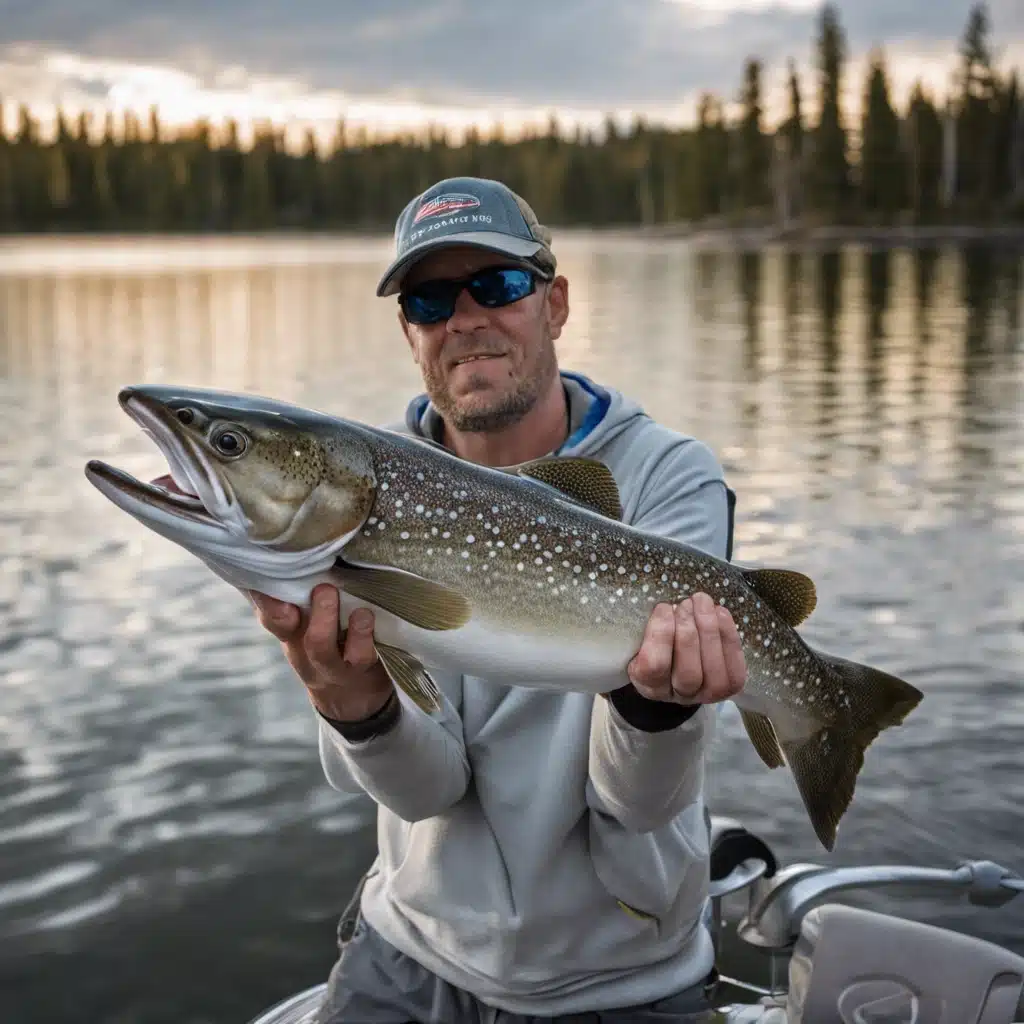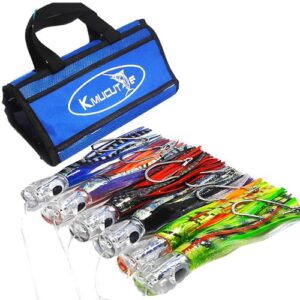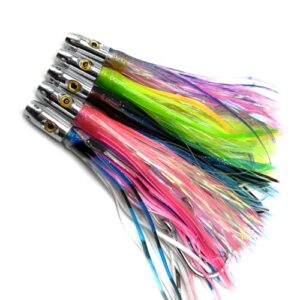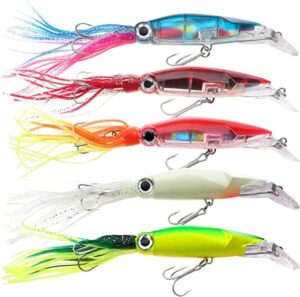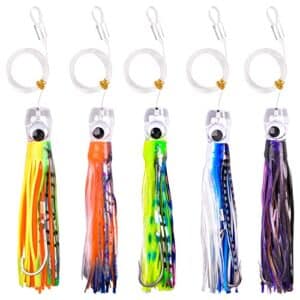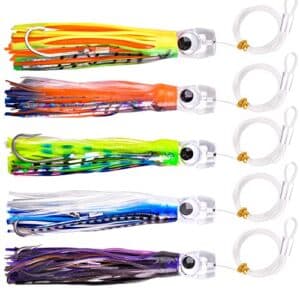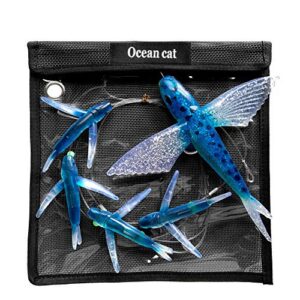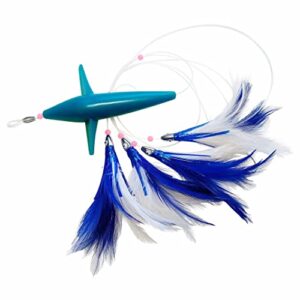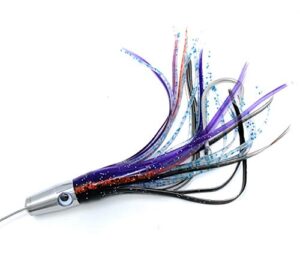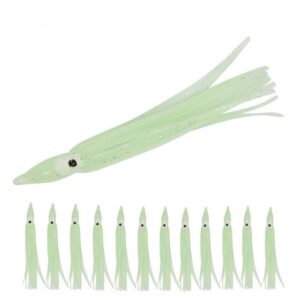Lake Trout Fishing Lures
Lake Trout: Deep-water dwellers, Lake Trout are targeted through jigging or trolling with heavy gear. Cold, deep lakes are their preferred habitat, often requiring downriggers to reach.
Common Lures for Lake Trout fish
Lake Trout, a cold-water species known for their size and depth preference, can be caught using various lures that mimic their natural prey, such as smaller fish. Here are some common lures used for Lake Trout fishing:
Jigging Spoons: Heavy spoons designed for vertical jigging are effective for reaching the deep waters where Lake Trout often reside. Their fluttering action on the fall mimics injured baitfish.
Tube Jigs: Soft plastic tube jigs, especially in sizes 3-5 inches, can mimic a variety of Lake Trout prey, from crayfish to squid and small fish. They work well when jigged off the bottom or through suspected trout holding areas.
Swimbaits: Large swimbaits can be effective for mimicking the sizeable forage fish that Lake Trout feed on. Fishing them on a jig head or with a weighted swimbait hook allows for depth control and a realistic swimming action.
Crankbaits: Deep-diving crankbaits allow anglers to target Lake Trout in deep water. Trolling these lures at varying depths can help locate schools of Lake Trout or solitary big fish.
Soft Plastic Worms: Large, scented soft plastic worms can be an unexpected choice but effective, especially when Lake Trout are feeding on lampreys or other elongated prey.
Blade Baits: Metal blade baits that vibrate can trigger strikes from Lake Trout, especially in colder water. Their vibration and flash mimic small fish, making them an attractive target for predatory trout.
Spinners: Large spinners with bright, flashy blades can attract Lake Trout in clearer water or when they are active near the surface.
When targeting Lake Trout, consider the depth and temperature of the water, as these factors significantly influence their location and feeding behavior. Deep trolling or vertical jigging in deeper waters are common strategies, especially during the warmer months when Lake Trout retreat to cooler depths. In the spring and fall, Lake Trout may come closer to the surface to feed, making them accessible to a wider variety of lures and techniques. It’s also beneficial to vary your retrieval speed and pattern to mimic the erratic move

